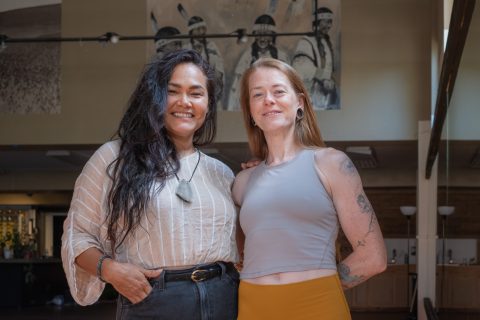Other views: Are you willing to pay for the B2H?
Published 12:00 am Tuesday, April 13, 2021

- {photoSource}La Grande Observer{/photoSource}
People ask, “Is that still going on?” Yes, it’s true, the massively destructive Boardman to Hemingway (B2H) transmission project is still under review. Each time we’ve asked folks to speak out, it’s more critical that they do.
The final hearing at the Oregon Public Utilities Commission on Idaho Power’s 2019 energy plan, which features B2H, is Thursday, April 15. The OPUC commissioners have been impressed with the number of public comments already received, and now is the most important opportunity to speak out with your reactions to Idaho Power’s power play.
Trending
Building the line will guarantee them cost recovery and a hefty 7.6% profit based on the project’s $1.2 billion cost. Good for them. Bad for us.
In 2015, when I started tracking these plans (integrated resources plans), Idaho Power claimed it needed 351 megawatts of energy by 2026 to replace energy from coal plant closures. Rather than building its own resources to satisfy this need, the company wanted to buy energy from the Mid Columbia energy trading hub and transmit it hundreds of miles away. That’s where the B2H comes in.
Closing coal plants is definitely worth supporting. But destroying hundreds of miles of private and public lands, habitats and sacred places — in addition to footing the bill — is not the way. Contrary to the company’s green-washing narrative, there are many ways for it to get or make the energy it may need.
Now, after six years and three IRPs, the “need” has been reduced to from 351 MW to 42 MW — and in the Idaho’s PUC review, the company state the need will be only 5 MW by 2029! This reduction has been occurring even with Idaho Power actively resisting more solar and wind contracts, battery storage or building any of its own energy resources. It has discouraged renewable energy projects through state legislation and is deincentivizing rooftop solar among customers. The industry’s innovations, appliance and building efficiencies, and people’s own conservation, continues driving down the need.
That’s right — 42 or 5 MW of energy need by 2029? They can easily make that up with a small solar farm or simple energy efficiencies, respectively. My point is: There is plenty of energy and energy generation potential in Idaho. The “need” can be easily canceled. So without a need, why the B2H? For Idaho Power it’s all about profits. Not only through the guaranteed return on investment on the capital project (B2H), but the company can continue to gain profits through transmission tariffs. At the Oregon Public Utilities Commission, the discussion has evolved into “regional grid capacity and resiliency,” and “costs to the ratepayers.” (Since the Bonneville Power Administration is currently a partner in the B2H that also means that we, as Oregon Trail Electric Cooperative members, are also ratepayers in this arrangement.)
I’ve asked for an analysis on upgrading and reconductoring the three lines that go from the Mid Columbia Hub to Idaho, from 230-kilovolt to 345-kV lines. The increased capacity of these three lines could yield a total of 345 kV more capacity. These lines could be fire-hardened; they could be digitized and the corridors could be cleared out — all benefiting actions bringing much more security and resiliency into the current system while reducing fire risks.
Trending
If Idaho Power really needed the capacity in the future, which is questionable, the Oregon PUC (the regulators in this case) should order the company to study upgrading before planning and building new.
There won’t be another opportunity to influence the OPUC for at least another year, and by then much more work will be completed in the permitting process. Not good. Therefore, we need to tell the OPUC: Do not acknowledge this project any longer. We can’t afford it and it is not needed. Write now (before April 15) to puc.publiccomments@state.or.us. For more info, check out www.stopb2h.org.
Now is the time to act.
Do you have a point you’d like to make or an issue you feel strongly about? Submit a letter to the editor or a guest column.









